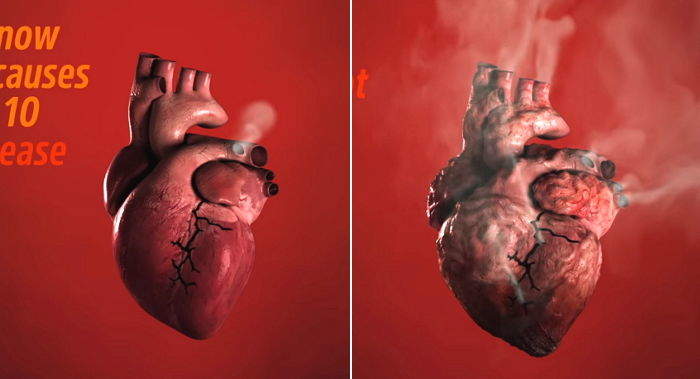Coronary artery disease (CAD) remains a significant health concern globally, contributing to a substantial burden of morbidity and mortality. Among the modifiable risk factors for CAD, smoking stands out as a major contributor to the development and progression of this cardiovascular condition. In this article, we delve into the intricate mechanisms through which smoking exerts its detrimental effects on coronary arteries, leading to CAD.
The Pathophysiology of Coronary Artery Disease
Before exploring the impact of smoking on CAD, it’s essential to grasp the fundamental pathophysiology of this disease. CAD primarily results from atherosclerosis, a process characterized by the buildup of plaque within the coronary arteries.
This plaque formation involves the deposition of cholesterol, inflammatory cells, and other substances on the arterial walls, leading to narrowing and eventual obstruction of blood flow to the heart muscle.
SEE ALSO: Two Treatments for Coronary Heart Disease
How Smoking Affects Coronary Artery Disease: A Detailed Analysis
Endothelial Dysfunction: Smoking damages the endothelial cells lining the coronary arteries. This damage disrupts the normal functioning of these cells, leading to decreased production of nitric oxide, a molecule crucial for maintaining blood vessel tone and flexibility. Endothelial dysfunction sets the stage for atherosclerosis by promoting inflammation and facilitating the adhesion of cholesterol and immune cells to arterial walls.
Promotion of Atherosclerosis: Cigarette smoke contains numerous toxic compounds, including nicotine, carbon monoxide, and free radicals. These substances accelerate the development and progression of atherosclerosis by promoting lipid deposition, inflammatory cell infiltration, and smooth muscle cell proliferation within coronary arteries. The net result is the formation of atherosclerotic plaques that narrow the arterial lumen and impede blood flow.
Pro-Thrombotic State: Smoking induces a pro-thrombotic state within the cardiovascular system. It enhances platelet activation and aggregation, increases blood viscosity, and promotes the formation of blood clots. In the context of CAD, these pro-thrombotic effects can lead to the occlusion of coronary arteries, triggering acute cardiovascular events such as myocardial infarction.
Impact on Lipid Profile: Chronic smoking alters lipid metabolism in a manner that exacerbates CAD risk. It reduces high-density lipoprotein (HDL) cholesterol levels, which are cardioprotective, while simultaneously increasing low-density lipoprotein (LDL) cholesterol oxidation, making LDL more atherogenic. These lipid profile changes further contribute to plaque formation and progression in coronary arteries.
Oxidative Stress and Inflammation: Cigarette smoke generates oxidative stress within the cardiovascular system, overwhelming antioxidant defenses and leading to cellular damage. This oxidative stress triggers inflammatory pathways, attracting immune cells to arterial plaques and promoting their instability. Inflammatory processes within coronary arteries contribute to plaque rupture and the formation of thrombi, precipitating acute coronary events.
Clinical Implications And Consequences
The detrimental effects of smoking on CAD have profound clinical implications. Smokers are at significantly higher risk of developing CAD at a younger age compared to non-smokers.
They also tend to have more severe and diffuse coronary artery disease, leading to increased rates of myocardial infarction, angina, and heart failure. Additionally, smokers with CAD are more likely to experience complications following revascularization procedures such as coronary artery bypass grafting (CABG) or percutaneous coronary intervention (PCI).
Smoking Cessation
Despite the adverse effects of smoking on CAD, the good news is that quitting smoking can substantially reduce cardiovascular risk. Studies have shown that smoking cessation leads to a rapid improvement in endothelial function, a decrease in inflammatory markers, and a regression of atherosclerotic plaques over time.
Furthermore, former smokers experience a significant reduction in cardiovascular events and mortality compared to active smokers.
Conclusion
In conclusion, smoking exerts a multifaceted and detrimental impact on coronary artery disease by promoting atherosclerosis, inducing endothelial dysfunction, enhancing thrombotic tendencies, altering lipid metabolism, and fostering oxidative stress and inflammation within coronary arteries. Recognizing these mechanisms underscores the critical importance of smoking cessation as a cornerstone of CAD prevention and management strategies.
Healthcare professionals play a pivotal role in educating patients about the cardiovascular risks of smoking and supporting them in tobacco cessation efforts to mitigate the burden of CAD and improve long-term outcomes.


